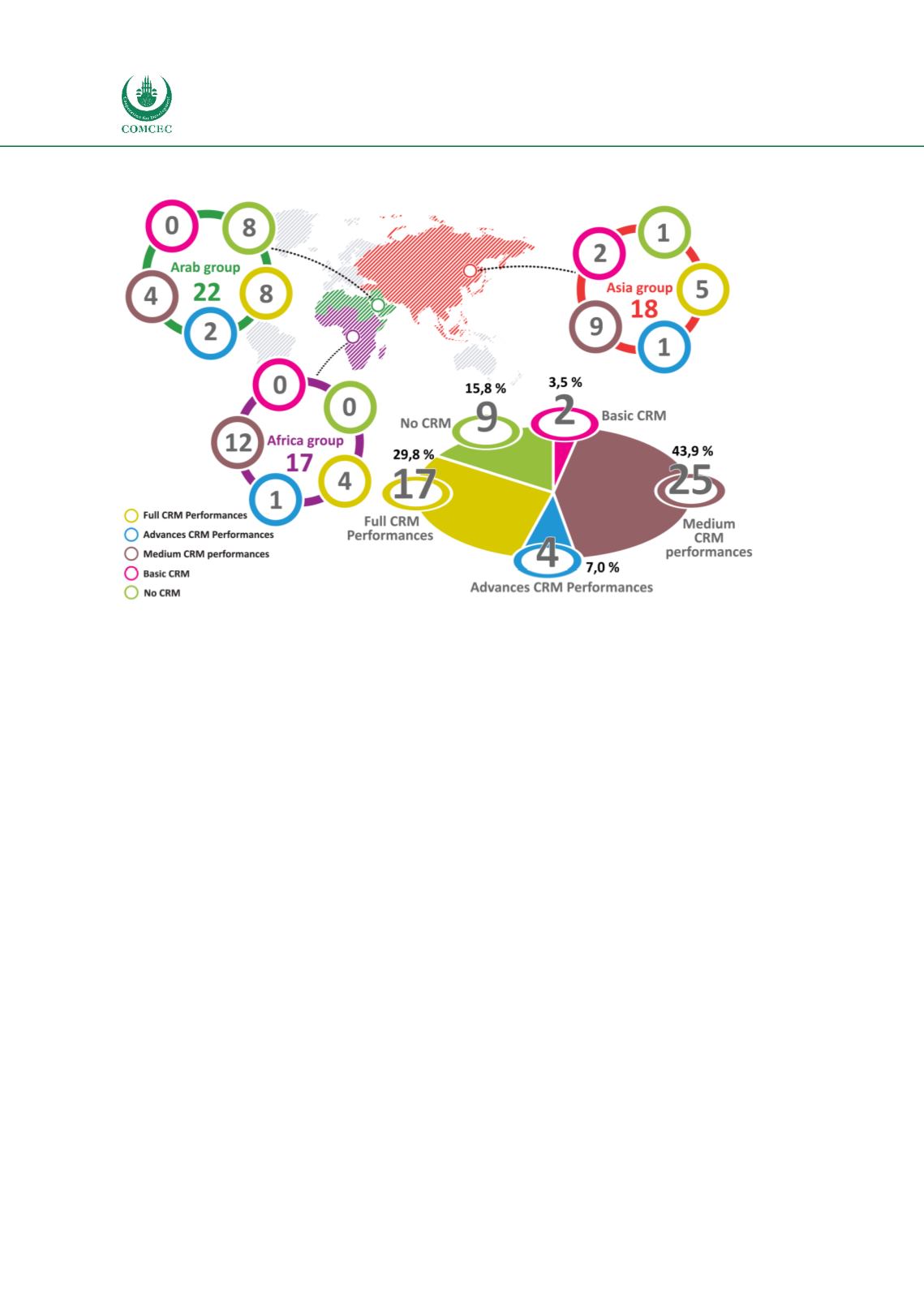

Facilitating Trade:
Improving Customs Risk Management Systems
In the OIC Member States
90
Figure 28: Level of coverage of the CRM cycle between the three OIC regional groupings
Author’s compilation
In the case when the customs declaration matches three risk profiles, the AW is channeling the
CD to the strongest profile. AW is not providing the results from the selectivity criteria (neither
risk profile nor risk indicators). The selectivity (in IT terminology transactional) risk module is
embedded, or “plugged into” the processing flow of the corresponding module of the CDPS (e.g.,
import, export, etc.). As such, event triggers (or called) the risk module to perform the targeting.
The risk module sends its output available back to the calling event in a suitable form.
Systemic limitations cause 34 OIC MS to use only the selectivity as a risk management method.
In its latest version, AW allows enter results from the control based on selectivity, limited to one
dropdown list (with five irregularities) and free text as a “control act.”
Customs Administrations should urgently modernize their information technology (IT)
infrastructures, as the CRM is a critical component of modernization initiatives, and it is an area
where customs agencies can quickly implement and begin using new technology to help improve
overall operational effectiveness.
Many national CDPS are developed quite a while ago when the challenges facing Customs were
ultimately different, focused on revenue. From the information available (38 OIC MS), nearly
58% of the CDPS of the OIC MS have been implemented/integrated between 1992 and 2010 (11
OIC MS between 1990 - 1999, 11 between 2000 - 2010, and 16 between 2010 - 2017). The CDPS
implemented before 2010 are with limited CRM supportive functionalities (se
e Figure 29).
















